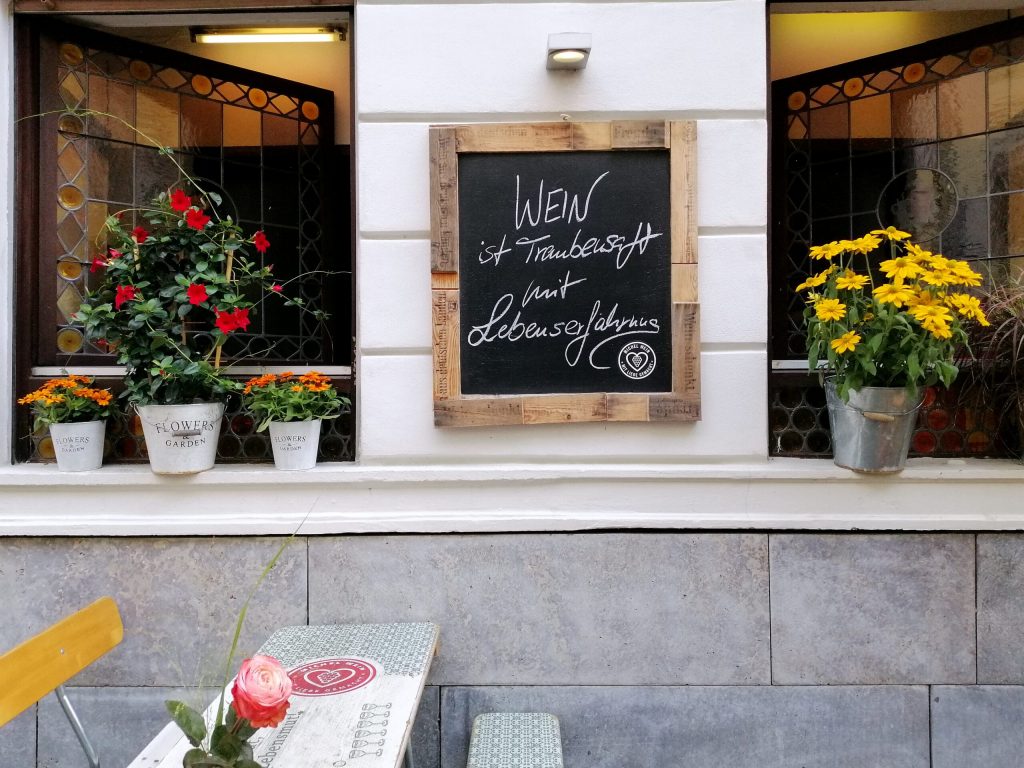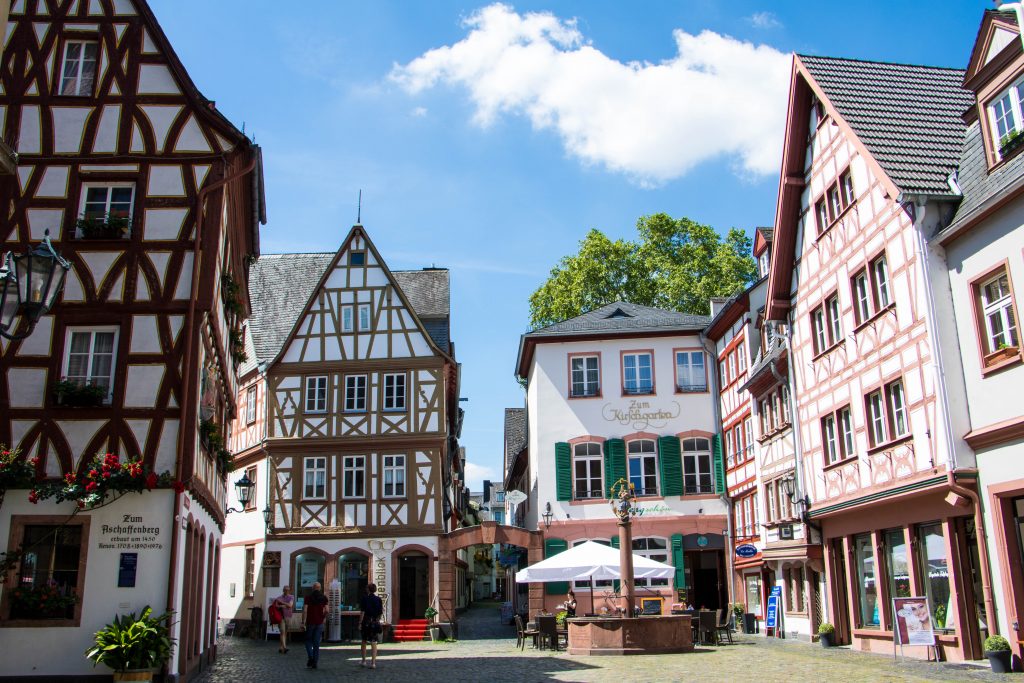Hidden beneath the busy streets of Mainz is a world that remains invisible at first glance - a fascinating network of dark cellars, mysterious corridors and dimly lit vaults. These underground rooms tell stories of times long past, of trade, crafts and perhaps also of many a hidden secret. Rheinhessen-Touristik invites you to discover this hidden world and see the treasures slumbering beneath your feet with new eyes. It is a journey into the depths of the city that promises surprising insights into the history and creative uses of these special places with every step down.
Kupferberg cellar
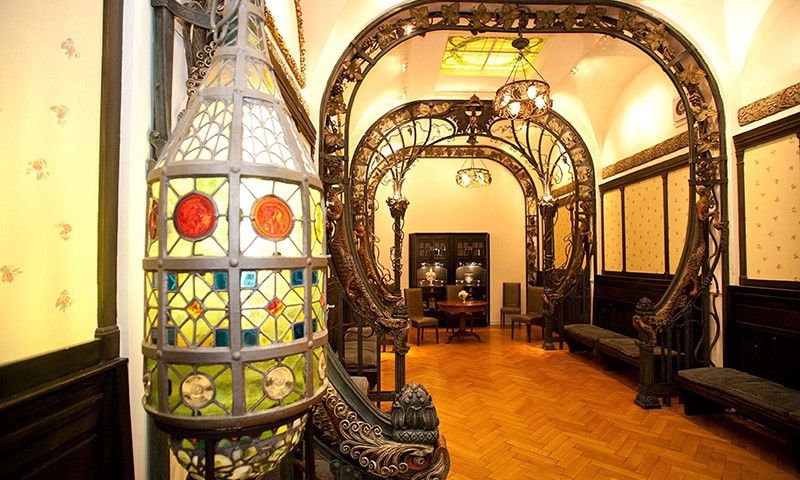
The Kupferbergkeller in Mainz is not only one of the oldest sparkling wine cellars in Germany, but also a place where history comes to life. The imposing architecture and impressive vaults make a tour of this cellar an unforgettable experience. Here, history and enjoyment merge into a unique journey through the world of sparkling wine production. Right in the heart of Mainz, Christian Adalbert Kupferberg founded the former global brand and sparkling wine cellar on Kästrich in 1850. The winery has the deepest layered sparkling wine cellars in the world, comprising a total of 60 cellar segments over seven storeys deep and up to 50 m below the surface. The site on which the winery was established was previously vineyard land, which is why older cellars can still be found in side wings.
What links Otto von Bismarck and the first World Exhibition in Paris with what was once the deepest champagne cellar in the world? During the approximately 1.5 hour exciting guided tour accompanied by a glass of sparkling wine, these and many other exciting stories of the historic area are told.
Crypt in St. Martin's Cathedral
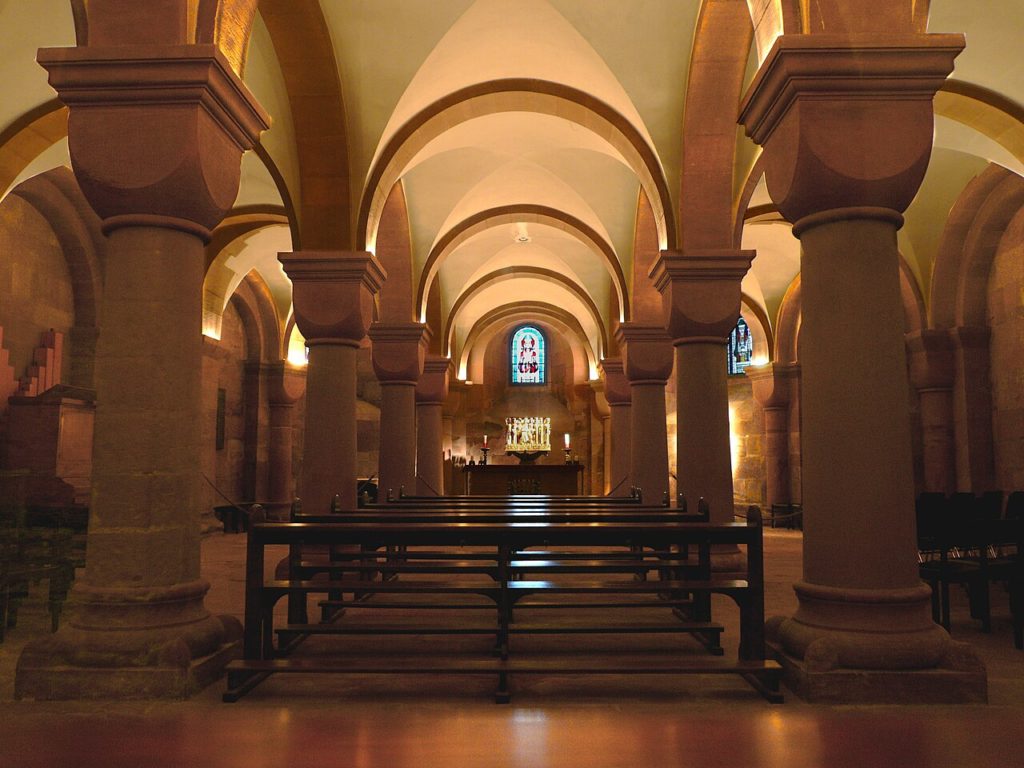
Deep beneath the venerable walls of the Mainz Domshidden from the eyes of passers-by lies a place that breathes history and holds secrets - the crypt of the cathedral. What is now a fascinating part of Mainz's underworld was once an ambitious building project that had to defy the course of nature. As early as 1100, plans were made to build a crypt in the eastern section of the cathedral. However, the high groundwater level, caused by the proximity to the Rhine, put the plans on hold for centuries. It was only between 1872 and 1876 that the crypt was completed in the neo-Romanesque style.
When you enter the crypt, you immediately sense the spiritual power of the place. The chapel is dedicated to St. Boniface and his relic is visibly embedded in the altar - a silent but powerful reminder of the old martyr traditions. Behind the altar sparkles one of the cathedral's most precious gems: an artistically crafted shrine that preserves the relics of 22 saints particularly revered in the diocese of Mainz. This shrine, created by Mainz goldsmith Richard Weiland, is a masterpiece. Made of gilded silver and adorned with precious stones, it shows the diversity of the saints of Mainz - martyrs, bishops, priests, scholars, soldiers, confessors, virgins and widows. At the center is St. Martin, the patron saint of the cathedral. Every glance at this work of art reveals new details and tells of the deep religious and cultural significance that this place has for Mainz. Another relic that can be found in the Boniface Chapel is the sweat cloth relic, which was originally kept in the Old Minster Monastery. It adds another layer of history to the mysterious atmosphere of the crypt.
The Isis and Mater Magna sanctuary
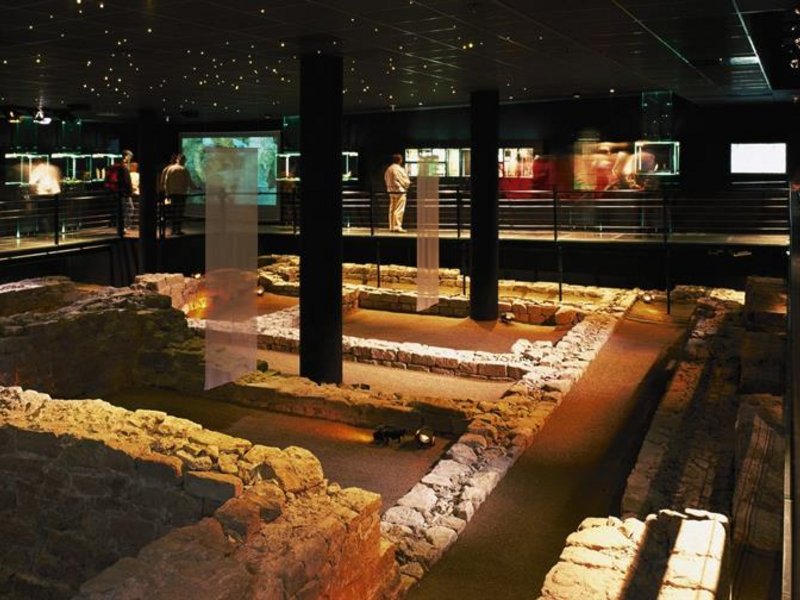
A fascinating treasure from Roman times is hidden in the middle of the hustle and bustle of Mainz: the remains of a sanctuary dedicated to the Egyptian and Oriental deities Isis and Mater Magna. This archaeological sensation, discovered in 2000 during construction work for a shopping arcade, provides a unique insight into the religious practices of the Romans and their deep devotion to mystical cults. The Temple of Isis and Mater Magna, which was probably used until the 3rd century, impresses with its variety of uncovered offerings. After years of restoration work, the temple was reopened in 2003 in the "Taberna archaeologica" was made accessible again directly at the site where it was found. Today, visitors can immerse themselves in a spectacular production that brings the atmosphere of the sanctuary to life and appeals to all the senses. The presentation of the temple by the Roman Mainz Initiative (IRM) is not only an impressive archaeological achievement, but also an invitation to explore the hidden history underground in the city. The Temple of Isis and Mater Magna is a must-see for anyone who wants to rediscover Mainz and its rich history.
Mainz underworlds
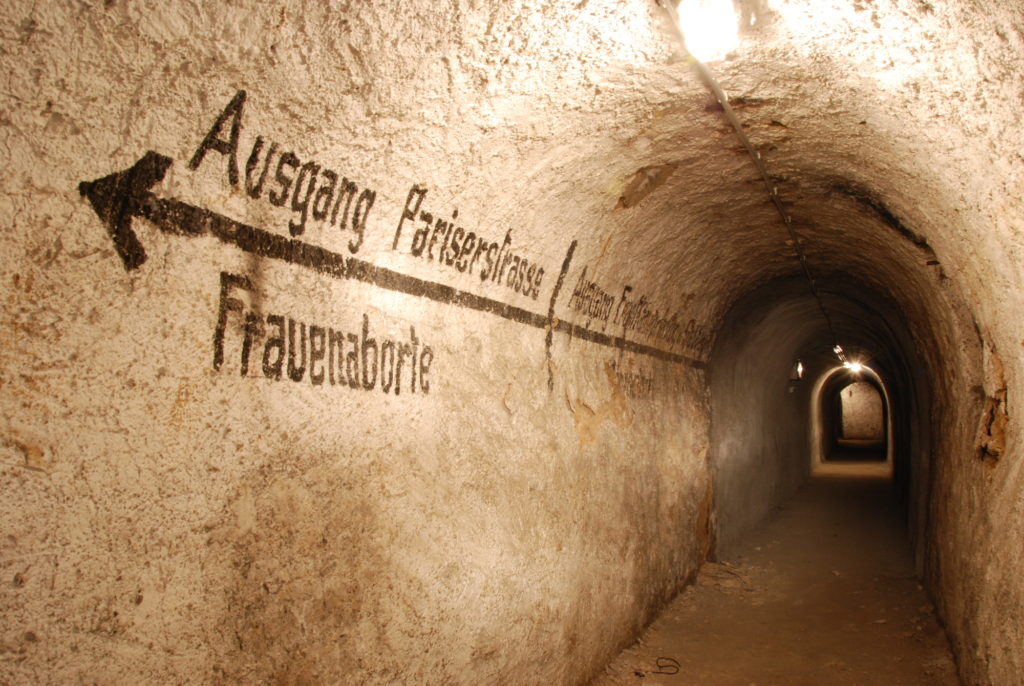
Few people know that there is a hidden network beneath the streets and buildings of Mainz that bears witness to exciting history and sophisticated craftsmanship. Who built these underground structures? What stories are hidden behind the dark walls? And what is the story behind the mysterious "Wasserschlösschen" or "Fort Philipp" and "Fort Josef" underground? Answers to these questions are provided by the Mainz Underworlds Association, which takes visitors into this mysterious world with regular guided tours. Whether you are a history buff, adventurer or curious city explorer - a tour through the Mainz Underworlds will turn you into an insider. The different focal points of the guided tours bring the diversity of the hidden past to life, be it the use of the cellars during wartime, their architectural features or the stories of the people who once shaped them. Ready for an unforgettable adventure? Further information and exciting insights can be found on the association's website: mainzer-unterwelten.de.
Mainz lower house
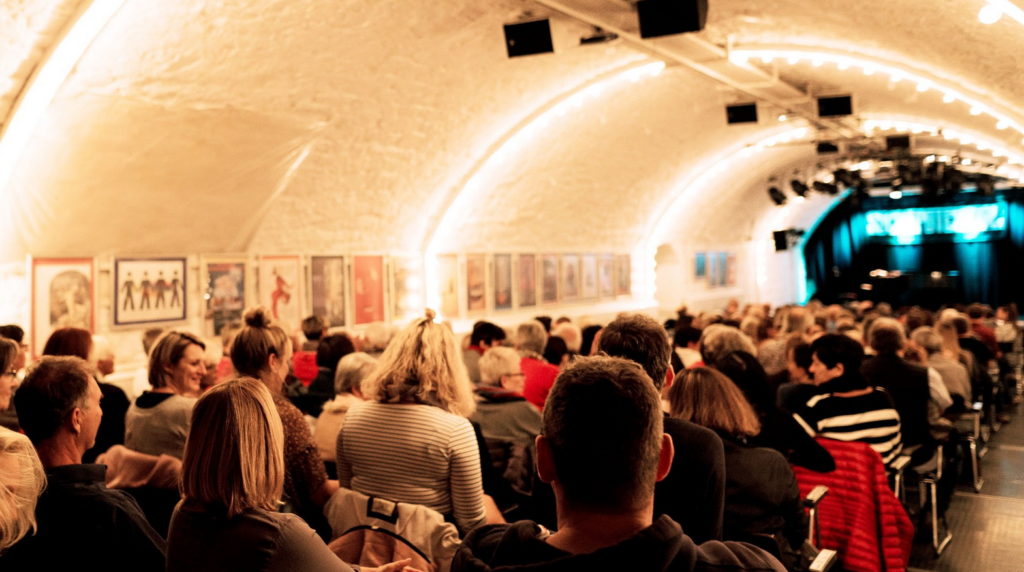
If you want to experience the charm of Mainz's underworld, you can't miss the unterhaus. It is not just a theater, but a place that inspires with its history, its standards and its passion for cabaret. Since its opening in 1966, it has been more than just a theater - it is an institution that gives cabaret in Germany a stage and celebrates cabaret, chanson, comedy and innovative hybrid forms. An unmistakable ritual marks the beginning of every performance: the bell in the foyer, a gift from the legendary cabaret artist Hanns Dieter Hüsch, rings out and calls the audience to attention. It announces that the unterhaus is not only a place for laughter, but also for questioning - always with a pinch of unadjusted free-spiritedness. But the bell also has another meaning: it is the symbol for the renowned German Cabaret Prize, which has been awarded annually since 1972 to artists who redefine the boundaries of cabaret. Whether well-known greats or up-and-coming talents: The lower house is a place where stories come to life underground in Mainz, social issues are brought to the fore and the audience experiences an evening full of inspiration.
Vaulted cellar in the Michel wine house
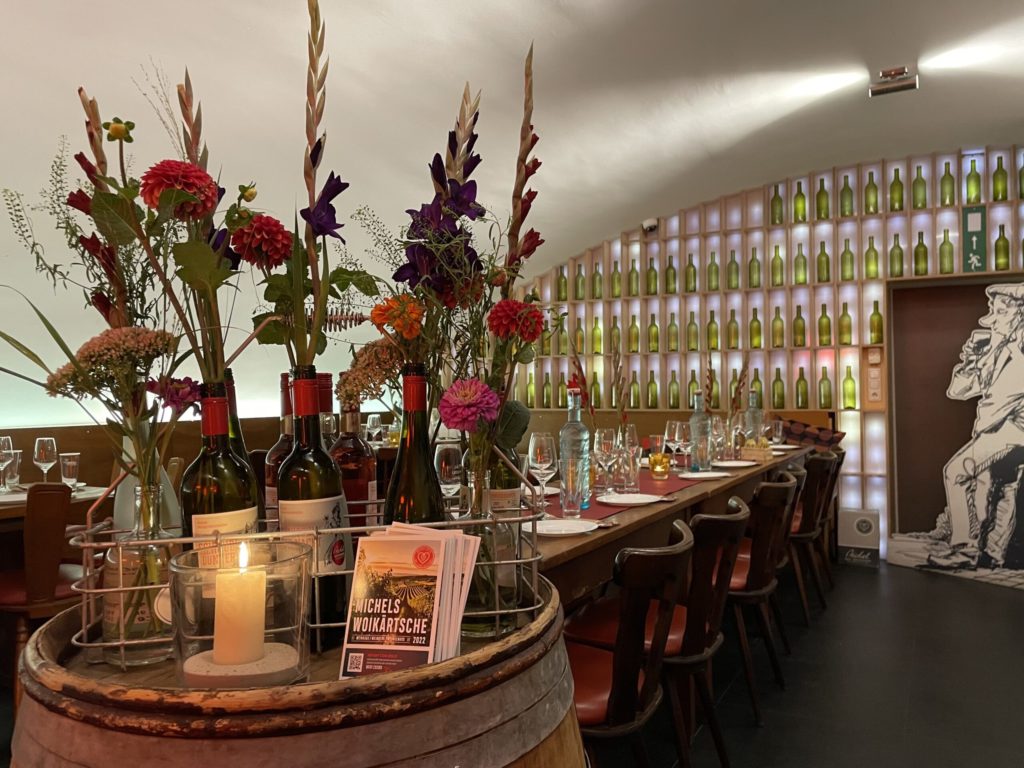
In the middle of the lively pedestrian zone of Mainz's old town, where life bustles in the alleyways and the scent of good wine fills the air, is hidden under the Michel wine house A very special highlight: the carefully renovated vaulted cellar. Here, where the Jakobsberg monastery once had its foundations, Mainz city history meets modern enjoyment. If you descend the stairs to the basement, you will discover a place that invites you to get together and feel good. The vaulted cellar offers space for up to 60 guests - perfect for birthdays, weddings, business lunches or cozy evenings with friends. The special feature: The owner has thought about cold days and has warm water flowing through the handrail that leads into the cellar. So a visit to the underground begins with a warm welcome. But it's not just private parties that are held here. As part of the Keller für Kenner cultural program, the vaulted cellar regularly becomes a stage for cultural events and wine tastings. Between the old walls, which tell stories from past centuries, the "wine personalities" of the house unfold their full aroma.
Eisgrubbräukeller
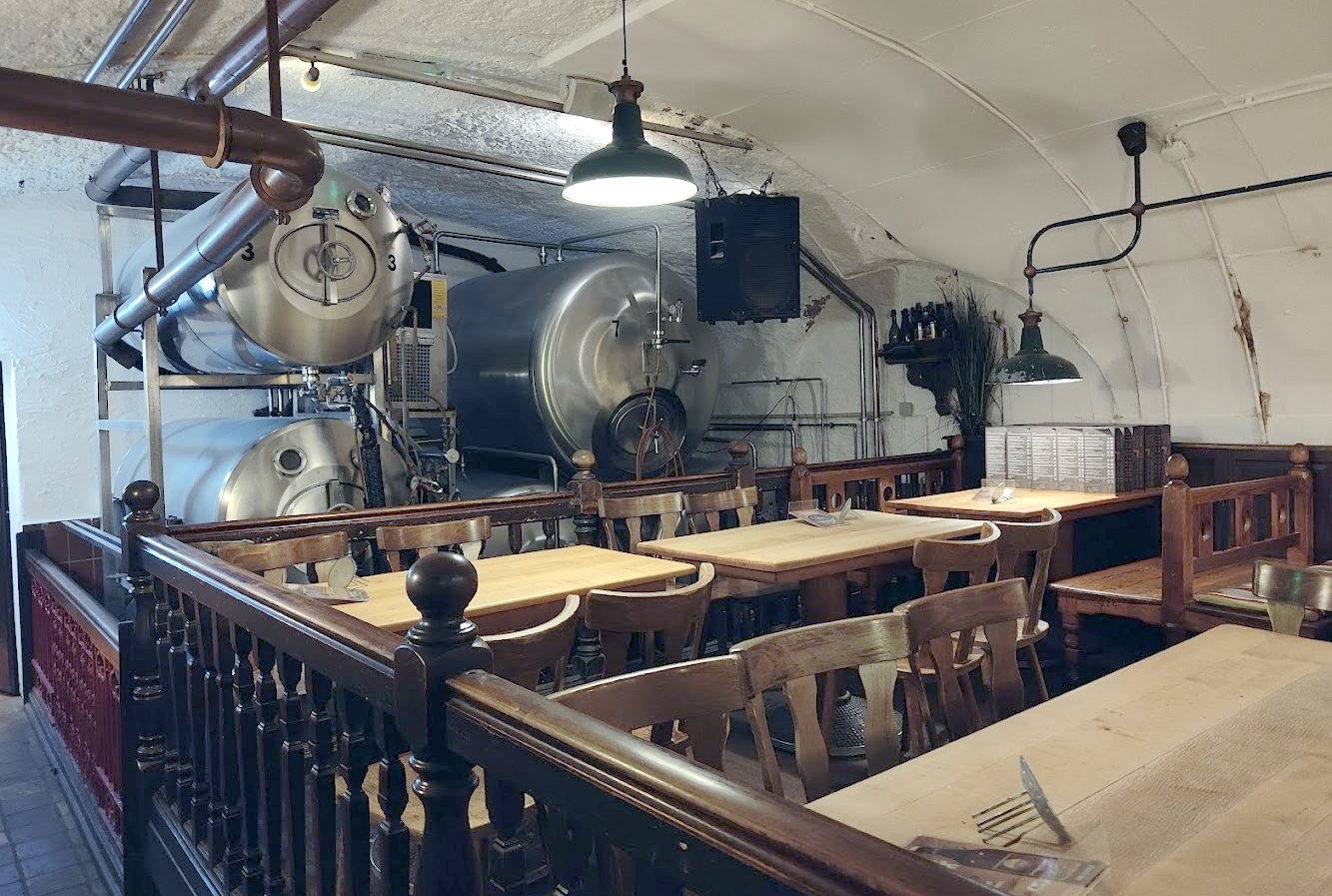
If you want to discover the underworlds of Mainz, you should make a detour to the Eisgrub-Bräu a place where tradition and hospitality come together in perfect harmony. The home-brewed, naturally cloudy beer alone is reason enough to visit this rustic brewery in the old town. Mikhail Gorbachev and Hans-Dietrich Genscher thought the same thing when they stopped off at Eisgrub-Bräu during a joint visit to Mainz - much to the delight of their surprised guests. But there is a deeper story behind the malty aroma and lively atmosphere. Before the beer flowed here, the town's ice cellars were operated in the listed vaulted cellars dating back to 1872 - a cool treasure trove long before the ice machine began its triumphal march. During the Second World War, the cellars were used as air raid shelters and later briefly as wine storage facilities. It was not until 1989 that the Eisgrub-Bräu was opened and became the first pub brewery in Mainz. Today, the Eisgrub-Bräu is not only a meeting place for beer lovers, but also a living testimony to Mainz's history. Between the thick, historic walls, the beer tastes twice as good - because every sip is also a journey through time.

